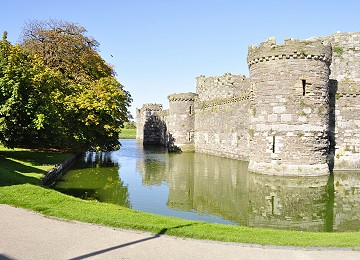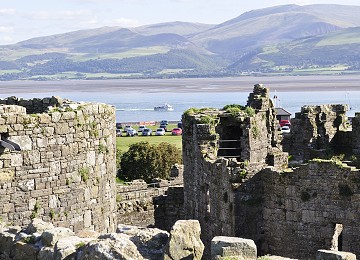Beaumaris Castle
Beaumaris Castle (Welsh: Castell Biwmares) is a majestic castle built by Edward I (1272–1307) in the seaside town of Beaumaris on the eastern side of Anglesey.
This was the last of the eight Welsh castles built by Edward I in his attempt to conquer Wales.
The castle at Beaumaris is a major tourist attraction which boasts stunning views across the Menai Strait to Snowdonia.
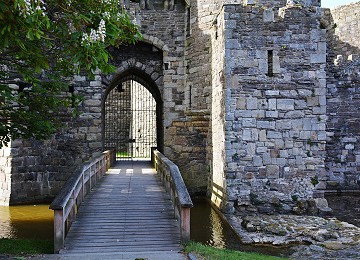
Edward I’s invasion of Wales
Beaumaris Castle on Anglesey in North Wales, was built as part of Edward I’s campaign to conquer North Wales after 1282.
Edward I and his architect James of St George had already built great castles at Conwy, Caernarfon and Harlech.
Plans were probably first made to construct the castle in 1284, but this was delayed due to lack of funds and work only began in 1295 following the Madog ap Llywelyn uprising.
Construction at Beaumaris Castle
During the first summer of construction a huge amount of progress was made with an average of 1,800 workmen, 450 stonemasons and 375 quarrier’s on the site.
Wages alone were thought to be in the region of £270 a week. The cost of building such a large castle took its toll and the project rapidly fell into arrears, forcing officials to issue leather tokens instead of paying the workforce with normal coinage.
Beaumaris Castle was never finished due to the vast cost of labour and materials. Over 400 stone masons along with 2,000 less skilled workmen
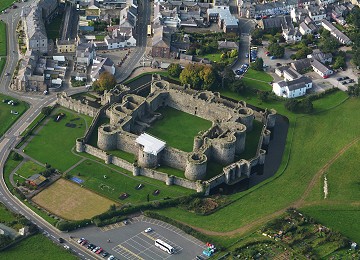
Perfect Design
Historian Arnold Taylor described Beaumaris as Britain’s “most perfect example of symmetrical concentric planning”.
For many years the castle was regarded as the pinnacle of military engineering during Edward I’s reign.
Beaumaris Castle is a fortress of immense size and a force to be reckoned with. This castle has no less than four four concentric rings of almost in penetrable defence including its own water filled moat, which also includes its very own mini dock.
On the outer walls at Beaumaris Castle there are over 300 arrow slit’s or arrow loops for the archers to defend the castle.
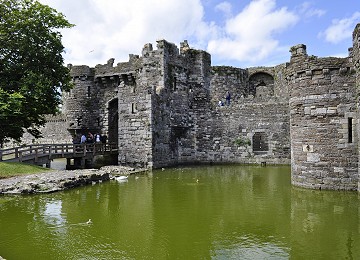
The Inner Harbour
The castle was built on the “fair marsh” and was given the Norman - French name of Beau Mareys meaning beautiful marsh.
Originally the tide of the Menai Strait would have come right up to the castle walls allowing the Kings ships to bring supplies and much needed building materials.
It is hard to visualise the coastal town of Beaumaris without its “Green” where the cars now park today.
Unfinished Castle
Construction of Beaumaris Castle slowed down in 1296, debts still continued to mount up, work slowed down even more the following year and stopped altogether by 1300. At this point it is believed that £11,000 had been spent on its construction.
In 1807 Lord Thomas Bulkeley purchased Beaumaris Castle for £735.00 which was incorporated into his local residence of Baron hill.
In 1925 Richard Williams-Bulkeley gave Beaumaris Castle to the Commissioners of Works who then undertook a large scale of works including cutting back the huge growth of ivy, restoration to a lot of the stonework and digging out the moat.
In 1950 the castle was designated as a Grade 1 Listed building due to being “one of the outstanding Edwardian medieval castles of Wales”
World Heritage Site
In 1986 UNESCO declared Beaumaris castle as a World Heritage site considering it one of “the finest examples of late 13th century and early 14th century military architecture in Europe”
Today this magnificent castle in Beaumaris is in the care of CADW the Welsh Assembly Government’s agency for historic monuments. Cadw is the Welsh word meaning to keep or protect. The castle is one of the main tourist attractions in Beaumaris and has in the region of 75,000 tourists a year.
The postcode for Beaumaris Castle is LL58 8AP


